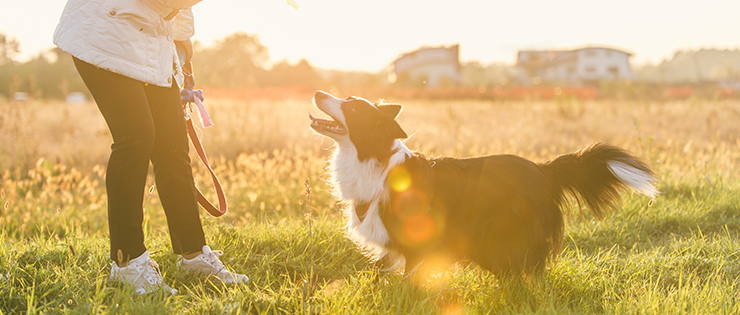
Amongst the most important things to teach your dog, training your dog to come back when called, is high on the list! In fact, it is arguably the most valuable command you can teach your dog, as it can mean a matter of life or death in some instances. Serious note aside, I have heard of some disturbing yet humorous methods people use to get their dog to come back to them. Some clients have told me that the only way their dog will come back to them, is if they drop to the ground and pretend they’re dead. Even then, sometimes it will take an hour for their dog to return to them, simply out of curiosity. Other people have been seen chasing their dog around a park for extended periods of time, hoping their dog will eventually tire. Although, it is invariably the owner who tires beforehand. There seems to be a desperation for people to get their dog to comeback when they are called, yet it is one of the most difficult things to successfully train. Here’s why:
- More often than not, owners call their dog back to end the fun. You see this a lot with parents of young children too, who call their children back from the playground time after time, without the child even responding to their request. Why come back, if you know the fun is going to end?
- Dogs are often called back to their owner because they are in trouble. If a dog can predict that they will be punished, they are unlikely to willingly return to their owner.
- Their owner is nowhere near as interesting as what is around them. Often, dogs spend more than ten hours a day in the backyard, so going to the park is the ultimate highlight. The scents, sights and sounds in a park can be overwhelming to many dogs, making it far too tempting to them to focus on anything else.
- When you think from your dog’s point of view, it makes sense why they are reluctant to return to us on command. So, with this understanding, it is important that owners reconsider the best approach to get a reliable recall. I have a few tips that will get you on the right track.
- Every time you have something your dog wants at home, whether that be food or a toy, use the command ‘come’ to pair the word with good experiences. When they come to you, give them the reward. Do this as often as you can.
- Practice recalling your dog when they are on the lead before you let them off the lead. That way you can follow through. Try to be 100% sure your dog will come back to you before you let them off lead.
- Be more motivating. Use high value treats, squeaky toys, and engage in play with your dog to make them enjoy being around you under distraction.
- When you call your dog to you, NEVER punish them for coming. They will be unlikely to come back to you again.
- When your dog comes to you, praise and reward them extensively, THEN… release them immediately back to what they were doing. If they know that coming to you results in a positive experience, plus they can go back to playing at the park, then they will be far more likely to comply.
- Don’t chase your dog, instead run away from them when you call them. It is an opposition effect, whereby moving away from them, generally makes them want to come toward you. Conversely, if you move toward them, it makes them want to move further away from you. Just think of that annoying boyfriend you used to have, who was too keen. Dogs like the chase a little too!
The art to dog training really is about thinking from their perspective. Once you know what they need and how they feel, you can apply your training to get the best from them and for them. Practice the recall under low distraction first and most importantly, make it fun. Start in your home, then progress to the back yard, an enclosed friends’ yards, then eventually to more open areas. Ideally all off lead areas should be fully fenced.
Playing with your dog, makes them want to be around you more; and it is a feeling that soon becomes more than mutual.